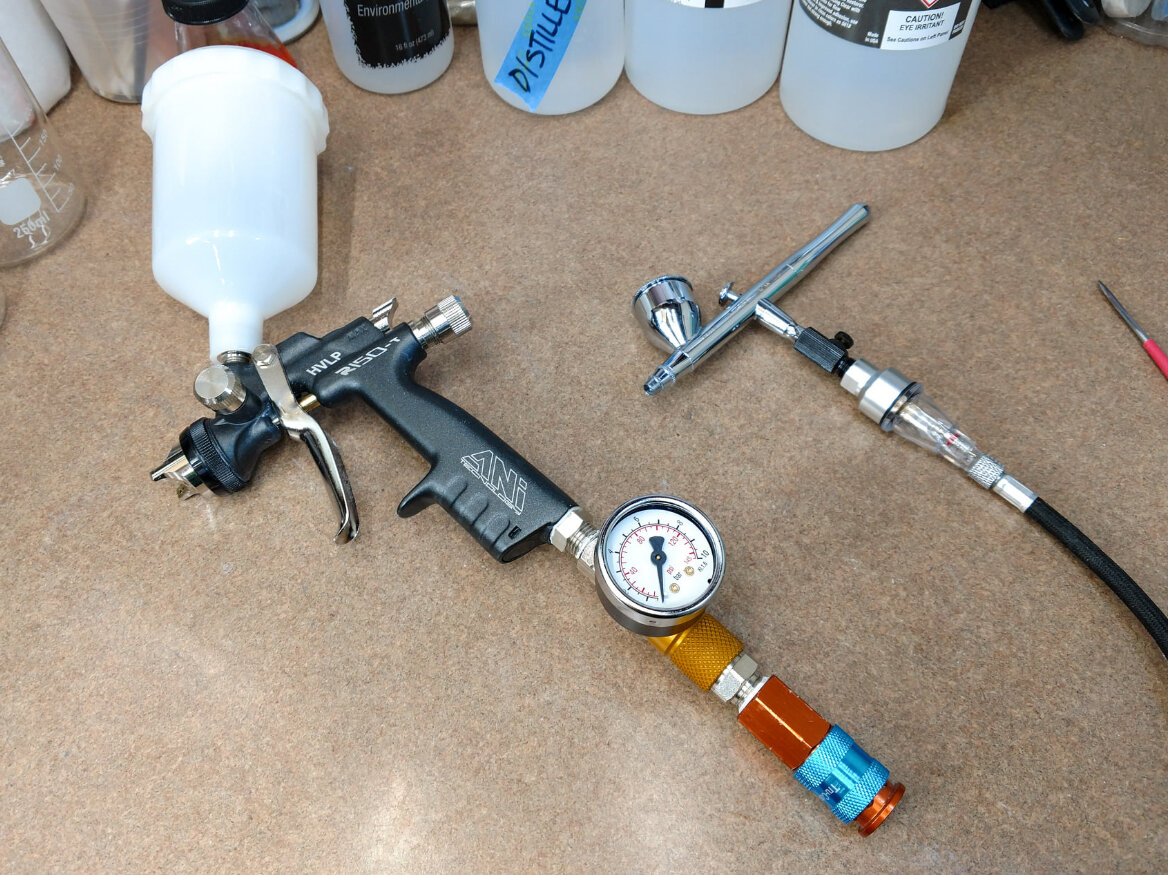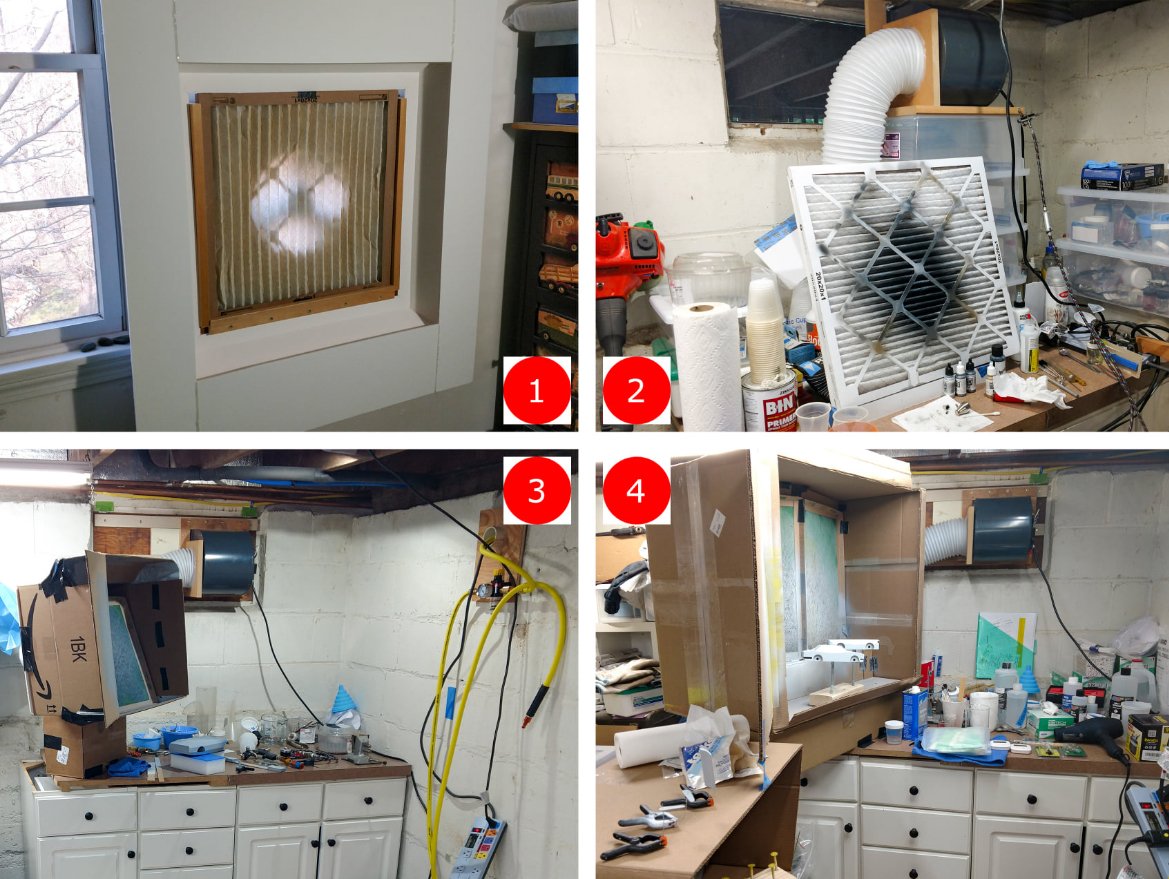Joy and dismay came with the final 2K clear coats results. Joy that it came out so well. Dismay from seeing all the debris that would require days of sanding and polishing to remove. Wrinkled and worn out fingertips were part of the process, but it was wonderful to see it come to life under the lights.
Primer coats beyond counting were applied and imperfections filled and sanded.
The two test bodies to the right were moved along one or two steps ahead of the 935 in order to do testing and develop techniques. Each was masked longitudinally so that I would have four halves to work with. At the end two old Co-Hog Special Edition blanks were enlisted for even more testing.
There were also multiple small assemblies made to simulate particularly tricky spots. It took lots of practice to be ready to spray the final color and clear coats.
This is the highly sophisticated warming booth (a large plastic bin on its end with a space heater at one end). All parts and assemblies were warmed and verified with a temp reader before spraying. The finishes were all heated as well.
Four test blocks made from jelutong and basswood were tested with four body filler materials throughout the development process. Test dings and scratches were added to see how the wood/filler joints behaved as the finishes were applied. From past experience I knew there were many potential problems to be avoided. Additional filler types used during finishing also required ongoing testing.
Next steps were always tried on the test blocks first to find the best strategies for each situation.
Another piece of highly sophisticated equipment - the drying booth. The engine bits and wheel laminations presented entirely different spraying challenges than the larger body parts.
An Iwata LPH-80 (not shown) and an ANI R150-T mini-gun (compared to full-sized car spray guns) were used for the larger surfaces of the body.
An Iwata HP-CR3 airbrush was best for smaller pieces and getting into the corners , crevices and creases.
Spraying finishes is an art form that evolves from moment to moment as the temperature and humidity changes. The different paint materials all require slightly different mix ratios and pressure settings. It got complicated enough that note-taking was a regular part of every spraying session.
The finishes being used are in general order of application from left to right:
- solvent-based shellac sealer - solvent-based automotive primer filler rattle cans - water- and solvent-based fillers and spot glazes - solvent-based automotive primer for mini-gun and airbrush - waterborne automotive sealers (these paints were semi-opaque so a base color was applied first) - waterborne automotive paints - colors, metallics and pearls - waterborne automotive clears - gloss and matte - reducers and cleaners - solvent-based rattle can decal carrier film
Not shown is the final solvent-based 2K clear coat. I was hoping to stay with waterborne throughout the process, but the quality was just not good enough. New products are always appearing and more testing will get me closer to the goal.
The spray booth itself is the final determinant in getting the best finish. Controlling the air flow and keeping the contaminants down are critical. My basement shop is not the best location for this, but gradual improvements have been made and more are in the works. I have a 4’ Binks booth with an 18” fan that I used for the early Co-Hogs, but it would suck everything in the house through the window! Smaller is better in this case and quality control will have to evolve.
A brief development chronology:
1 - January 2020 - 8" fan in a bedroom window - only small parts
2 - July 2020 - 6" fan and ducting in cellar window - still small parts
3 - October 2020 - same fan and ducting with window sealed for coming winter weather - cardboard box enclosure needed to contain overspray from mini-gun used for complete body coverage
4 - December 2020 - same fan and ducting - even bigger box enclosure - first so-called drying booth
Plans for an enclosed booth with an explosion-proof 10" fan and proper filtering are well along and parts are being gathered.








